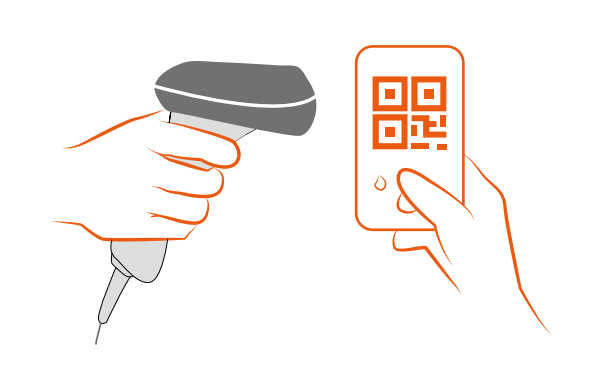Barcode scanning is required on mobile phone back covers before offline assembly. The QR code on the back cover is a 3mm×3mm Data Matrix (DM) code, laser-etched in black-on-white, ensuring each product's code is fully readable. The scan results are then compared with barcode printing data to guarantee no duplicates or omissions.
The system must read 3×3mm Data Matrix (DM) codes with a 99% success rate. It supports dynamic code reading for production lines with speeds exceeding 500mm/s. Decoded data can be exported in Excel format. Failed decodings trigger audible and visual alarms.
Customer Paint Points:
The customer currently relies on manual handheld scanning, which is inefficient and prone to duplicate or missed scans. The barcodes are label-printed QR codes that often become smudged due to friction during manual application, making them unreadable by handheld scanners.

Project Challenges:
The project involves QR code reading on mobile phone back covers, requiring dynamic scanning with over 99% accuracy. Due to the product's thin profile, conventional side-mounted photoelectric sensors cannot achieve stable detection.
Model Selection:
The R-3350 model from the intelligent code reader R-3000 series integrates a megapixel sensor and high-performance processing chip, delivering exceptional computing power to reliably capture barcodes on fast-moving objects. A distance sensor installed above the equipment detects products passing through the sensing area and triggers the code reader to capture images.
Advantages:
The RegemMarr R-3350 code reader from the intelligent R-3000 series adopts next-generation AI algorithms. Its comprehensive database not only meets customer accuracy requirements but also features self-learning capabilities, significantly reducing debugging costs for customers.
The compact R-3350 code reader, when paired with multi-angle mounting brackets, significantly enhances operational flexibility and excels in various challenging scenarios. Equipped with multi-spectrum lighting options and an optional polarizing filter, it effortlessly handles diverse materials - including highly reflective surfaces. Its adjustable focal length not only accommodates different product models but also reduces model-changeover calibration time for customers.